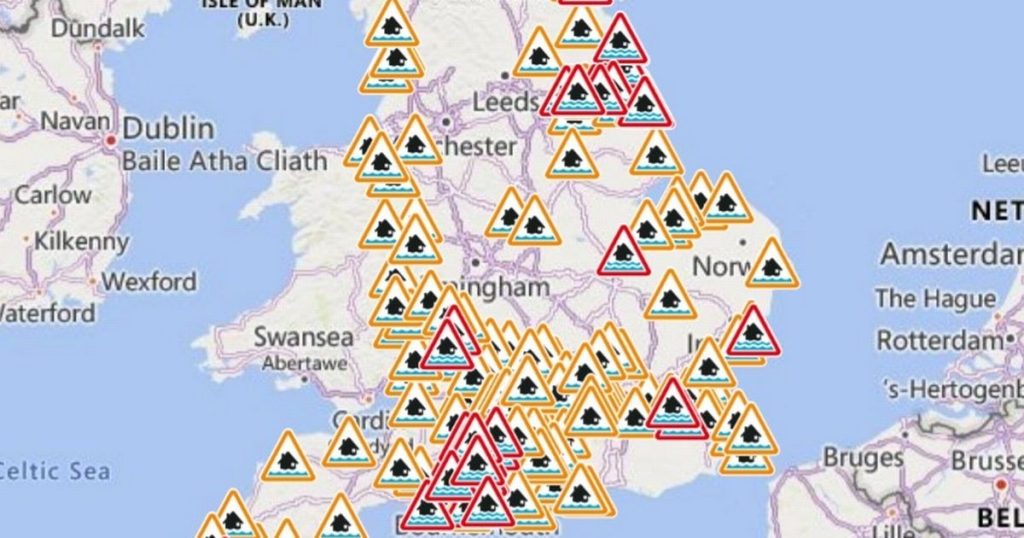Storm Kathleen caused significant damage in the UK, bringing heavy rain and wind gusts that led to widespread flooding and flight cancellations. The River Thames in Oxfordshire burst its banks, and more than 150 flood warnings and alerts were issued. The Met Office issued a yellow weather warning for rain, with up to 60mm forecasted in parts of Scotland. The Environment Agency issued flood warnings along the Humber in Humberside and East Yorkshire, as well as coastal areas across the UK, including Bridlington, Christchurch, and Salisbury. Scotland and Wales also had several flood alerts in place.
Despite the storm, temperatures were mild during the weekend, reaching the warmest day of the year so far in certain areas. The storm contributed to warmer temperatures due to a southerly wind bringing warmer air from the continent. However, approximately 12,000 customers in Ireland were still without electricity after the storm, with high winds causing travel disruption and flight cancellations. The storm’s impacts were felt across the UK and Ireland, with thousands left without power and significant travel disruptions.
The storm’s aftermath also highlighted the impact of climate change and the increasing frequency of extreme weather events. The heavy rain and flooding caused by Storm Kathleen raised concerns about the vulnerability of homes and businesses to such disasters. The Environment Agency and other agencies worked to address the flood warnings and alerts, highlighting the need for preparedness and resilience in the face of severe weather events. The storm served as a reminder of the importance of climate adaptation and mitigation efforts in order to reduce the risks associated with extreme weather events.
The storm’s impact was not limited to the UK, as Ireland also faced power outages, flight cancellations, and travel disruptions. The severity of the storm highlighted the need for coordinated response and preparedness efforts to mitigate the impacts of such events. The storm provided valuable lessons in disaster response and highlighted the importance of community resilience in the face of extreme weather events. The collaboration between agencies and communities in response to Storm Kathleen demonstrated the need for effective communication and coordination in times of crisis.
The storm also raised questions about infrastructure resilience and the need for investment in flood prevention measures. The flood warnings and alerts issued by the Environment Agency underscored the importance of monitoring and responding to changing weather conditions. The storm’s impact on coastal areas and riverbanks highlighted the vulnerability of such areas to flooding and erosion. In the aftermath of Storm Kathleen, there were calls for increased support for flood prevention and management efforts to reduce the risks posed by future extreme weather events.
Overall, Storm Kathleen’s impact on the UK and Ireland highlighted the need for greater preparedness and resilience in the face of climate change. The storm served as a wake-up call to the growing threats posed by extreme weather events and the importance of proactive disaster response and mitigation efforts. The collaboration between agencies, communities, and individuals in response to the storm demonstrated the power of collective action in building resilience and adapting to the changing climate. As severe weather events become more frequent, the lessons learned from Storm Kathleen will be crucial in shaping future response efforts and ensuring the safety and security of communities in the face of extreme weather.


